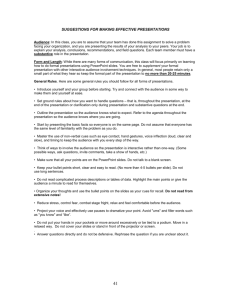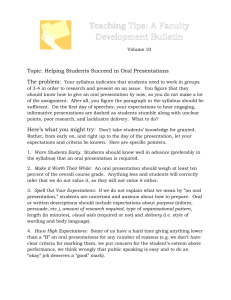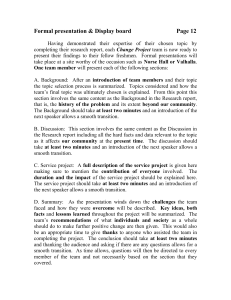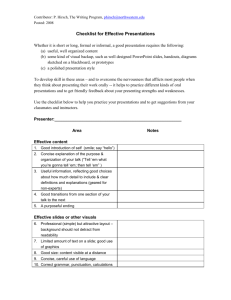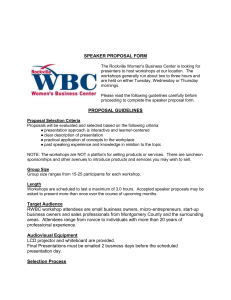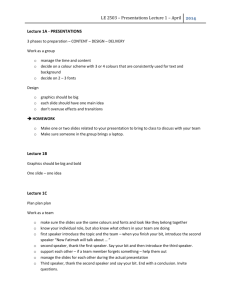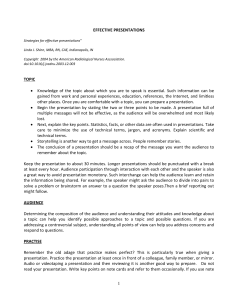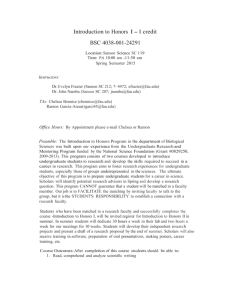Know your audience (a variation of the MBTI types)
advertisement
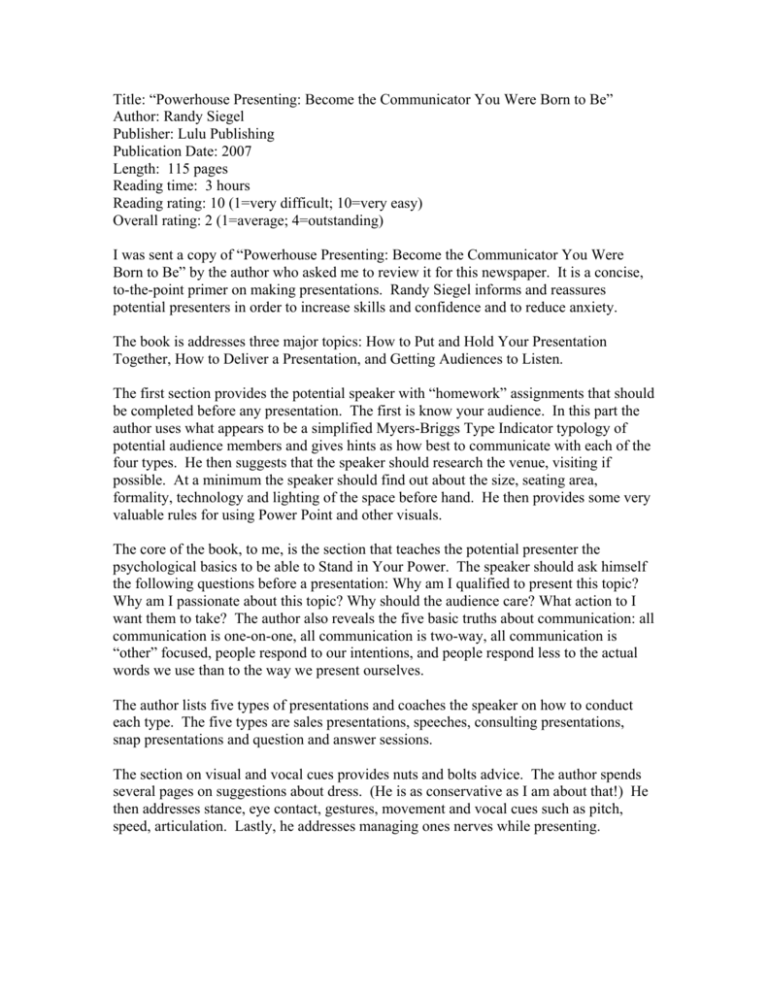
Title: “Powerhouse Presenting: Become the Communicator You Were Born to Be” Author: Randy Siegel Publisher: Lulu Publishing Publication Date: 2007 Length: 115 pages Reading time: 3 hours Reading rating: 10 (1=very difficult; 10=very easy) Overall rating: 2 (1=average; 4=outstanding) I was sent a copy of “Powerhouse Presenting: Become the Communicator You Were Born to Be” by the author who asked me to review it for this newspaper. It is a concise, to-the-point primer on making presentations. Randy Siegel informs and reassures potential presenters in order to increase skills and confidence and to reduce anxiety. The book is addresses three major topics: How to Put and Hold Your Presentation Together, How to Deliver a Presentation, and Getting Audiences to Listen. The first section provides the potential speaker with “homework” assignments that should be completed before any presentation. The first is know your audience. In this part the author uses what appears to be a simplified Myers-Briggs Type Indicator typology of potential audience members and gives hints as how best to communicate with each of the four types. He then suggests that the speaker should research the venue, visiting if possible. At a minimum the speaker should find out about the size, seating area, formality, technology and lighting of the space before hand. He then provides some very valuable rules for using Power Point and other visuals. The core of the book, to me, is the section that teaches the potential presenter the psychological basics to be able to Stand in Your Power. The speaker should ask himself the following questions before a presentation: Why am I qualified to present this topic? Why am I passionate about this topic? Why should the audience care? What action to I want them to take? The author also reveals the five basic truths about communication: all communication is one-on-one, all communication is two-way, all communication is “other” focused, people respond to our intentions, and people respond less to the actual words we use than to the way we present ourselves. The author lists five types of presentations and coaches the speaker on how to conduct each type. The five types are sales presentations, speeches, consulting presentations, snap presentations and question and answer sessions. The section on visual and vocal cues provides nuts and bolts advice. The author spends several pages on suggestions about dress. (He is as conservative as I am about that!) He then addresses stance, eye contact, gestures, movement and vocal cues such as pitch, speed, articulation. Lastly, he addresses managing ones nerves while presenting. The book is user-friendly. There are enough anecdotes to break up the lists and drive home points. Each chapter ends with a list of Power Surges, which are recaps of the important points in each chapter. “Powerhouse Presenting” is not a breakthrough publication, but the author has put together a considerable wealth of information on an activity feared by many people. I think this book would be a great resource for anyone moving into a period of his career where more will be expected of him, such students going to college or graduating from college or a person who just got a promotion. It also is not a bad refresher course for those of us who are more experienced presenters. Beverly Little is a Professor of Management at Western Carolina University, where she teaches Introduction to Management, Human Resource Management, Organizational Behavior and Leadership Development. For previously reviewed books, visit our Web site at www.wcu.edu/cob/.
